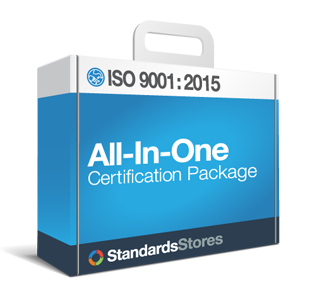ISO 9001:2015 Clause 7 Support
- Providing necessary monetary and physical assets, resources and systems (such as personnel, plant/office, logistics, working conditions, etc.)
- Providing and maintaining monitoring and measuring resources (i.e. calibrated equipment)
- Determining and maintaining organizational knowledge
- Ensuring personnel competency and providing additional training to achieve competency
- Communicating the quality policy, relevant quality objectives, and each employees contribution to the QMS
- Documenting information necessary for the operation of QMS processes and conformance to ISO 9001:2015
Clause 7 Support
This section takes a broad view of items needed to realize the requirements of ISO 9001:2015, specifically calling for support in these critical areas:
-
- What resources on hand vs. what needs to be procured including:
- labor/skills
- plant or office facilities/utilities
- information technology/communications
- transportation/logistics
- equipment
- working conditions/environment (including physical and interpersonnel emotional, intellectual, and motivational issues)
- Measuring the type, level, scope, continuity and suitability of resources including ongoing justification of their need.
- Calibrating or verifying monitoring and measuring resources that affect the conformity of products and services.
- Determining and maintaining organizational knowledge such as backing up electronic documents, records, or systems and documenting essential tribal knowledge.
- What resources on hand vs. what needs to be procured including:
- Learn more about ISO 9001 Resource Management
The aptitude of those who execute QMS processes need to be assessed against the requirements for the tasks, and any deficiencies be addressed through personnel training, exposure, outsourcing or reassignment.
The standard requires that everyone, not just those who administer the QMS, become familiar with its policies and objectives and know what they must do to achieve its goals, including what happens if they don’t adequately meet these requirements.
A formal plan and activities for informing the organization about the QMS needs to include:
- Who needs to know about each specific QMS element
- How and when that communication will take place
- And who is responsible for the information being transmitted
Clause 7.5: Documented Information
The nature of documentation has been expanded in order to both meet that which is required by the standard, but also what is needed by the organization itself to practically implement the QMS. For example, you do not need to a documented procedure for every process, but you may need one for more complex processes. The extensiveness of that documentation will vary based on a variety of factors (i.e. size, mission, products, services, sophistication, etc.). It does provide these specific documentation criteria:
- It must include a means for proper description including its source, purpose, change history, review/approvals and the method of communicating (text, audio, video, pictorial, multimedia, interactive, etc.)
- A means must be provided to formally manage the documentation, balancing the need for access versus security
- Going further, there must be a plan and approach governing documentation dissemination (what, when, and where documentation can be accessed and by whom), integrity/validation, revision, approval, storage and destruction (if applicable)
Much of this criteria can be met using document control software to help you manage all your documented information. Some ERP or MRP systems include document control capabilities. The most basic method used for document control is maintaining on a shared network with restricted editing functionality and updates managed manually. Many organizations will assign document control responsibilities to a designated Document Controller.
- Learn more about ISO 9001:2015 Documented Information
Please note that certain text from the ISO 9001 standard is only used for instructional purposes. Standard Stores recognizes and respects the International Organization for Standardization (ISO) copyright and intellectual property guidelines.


